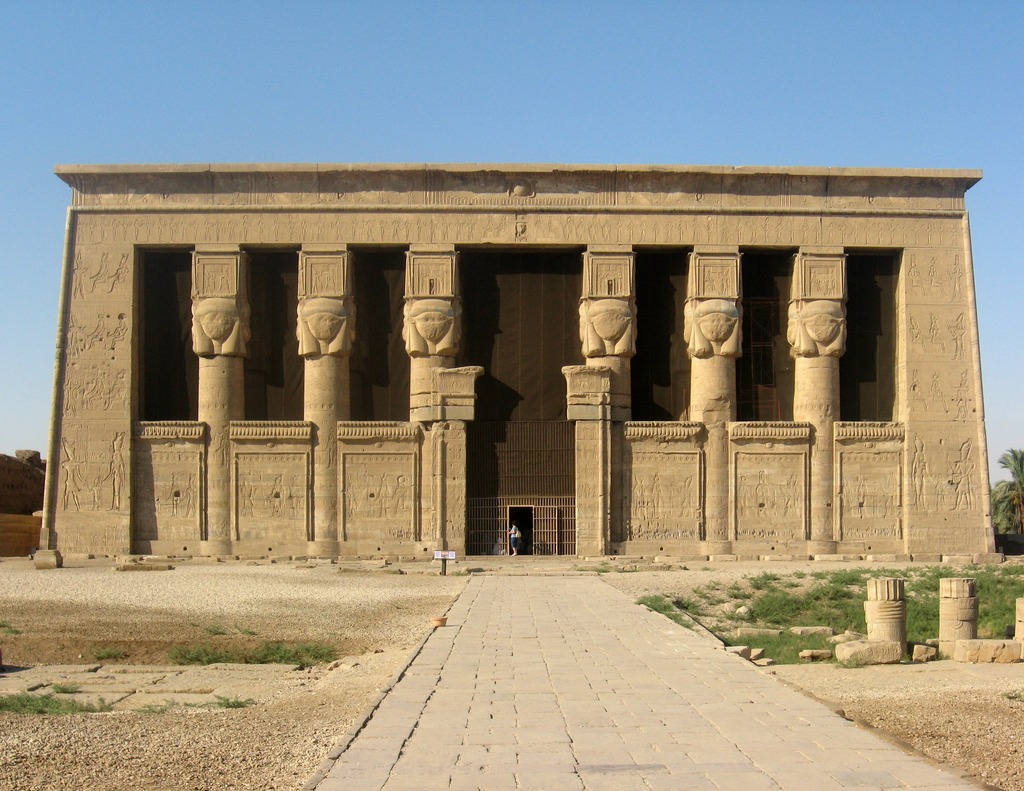Just north of Luxor lies one of Egypt’s most enchanting temples — Dendera, the sacred home of Hathor, goddess of love, music, joy, and cosmic harmony. This beautifully preserved site radiates divine feminine energy, with ceilings that map the stars and walls that sing the story of rebirth. For travelers seeking both history and spiritual connection, Dendera offers a luminous blend of art, astronomy, and sacred mystery.

Overview
Nestled along the west bank of the Nile near Qena, Dendera Temple stands as a radiant tribute to Egypt’s divine feminine. Visitors often describe a sense of calm as they enter its cool halls, where the air seems charged with both mystery and peace. The temple complex, primarily constructed during the Ptolemaic and Roman periods, reflects a synthesis of Egyptian and Hellenistic influence — and it’s one of the few temples where the entire structure remains largely intact, including crypts, roof chapels, and vibrantly painted ceilings. For spiritual travelers, Dendera is more than an archaeological site — it’s an energetic portal, believed to align the heart and spirit through Hathor’s resonance of joy and creation.
Top Attractions
The Hypostyle Hall greets you with massive columns crowned by Hathor’s face, while the painted ceiling above maps a storehouse of sky lore in red and blue pigments that survive millennia. The Dendera Zodiac — a star chart that once sat on the temple’s ceiling — reveals how the ancients read the heavens; a replica is now famous in museum collections around the world. The Sacred Birth House (mammisi) celebrates divine birth and renewal, and the rooftop chapels offered priests a place to observe celestial movements. Below the surface, the temple’s crypts and sanctuaries still carry the hush of ritual life, and from the rooftop you can take in the sweep of Nile country that framed the temple’s ceremonies for generations.
Cultural Highlights
Dendera was more than a place of worship — it was a cultural engine. Festivals here honored Hathor with music, dance, and offerings; musicians and celebrants traveled to the temple to join the rites that reinforced community and cosmic order. The iconography of Dendera emphasizes fertility, feminine power, and cosmic balance — themes that resonate with contemporary spiritual visitors seeking renewal, creativity, or reconnection to the sacred feminine. Because Dendera remained in use for many centuries, it displays layers of tradition and influence, making it a vivid classroom in Egypt’s evolving religious life.
Travel Tips
-
Best Time to Visit: October–April, when temperatures are milder.
-
Getting There: About 2.5 hours north of Luxor by car; many travelers combine Dendera with Abydos on a single guided day trip.
-
Recommended Stay: Plan 1–2 hours to explore the main temple, rooftop, and crypts.
-
Traveler Vibe: Ideal for photographers, spiritual seekers, couples, and anyone fascinated by archaeoastronomy.
✅ Quick Facts Box
📍 Location: Qena Governorate, ~60 km north of Luxor
🕒 Best Time to Visit: October–April
🏛 Famous For: Temple of Hathor, ancient zodiac, painted ceilings
🚗 Distance from Luxor: ~2.5 hours by road
Conclusion
The Temple of Hathor at Dendera is a living testament to ancient Egypt’s love of beauty, music, and cosmic order. The carvings and ceilings still sing of rituals and star-maps, and visitors frequently leave with a sense of lifted spirits and quiet awe. Whether you’re drawn by archaeology, astronomy, or spiritual reconnection, Dendera offers an unforgettable encounter with Egypt’s celestial heritage.
Ready to Explore?
Book your Dendera and Abydos Day Tour with Luxor Booking Tours and walk in the footsteps of ancient devotees who celebrated the joy and wisdom of the goddess Hathor.